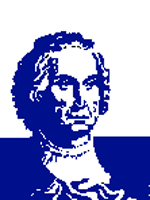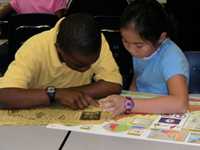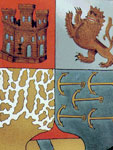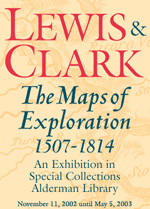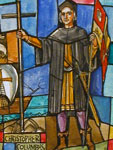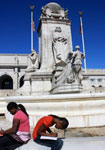1. Columbus set sail to prove that the world was round.
False: Washington Irving's 1828 Life of Christopher Columbus spread the idea that Columbus wanted to prove that the earth was round. About 2,000 years before Columbus’s voyage, however, Aristotle proved the spherical nature of the earth, pointing out the curved shadow it casts on the moon. By Columbus' time, virtually all learned people believed that the earth was not flat.
Columbus did debate with scholars, but the argument he had with them was about something completely different: the size of the globe. And in the end, Columbus was incorrect: he thought the earth was small enough to allow him to sail to India in a relatively short period of time.
Irving's romanticized version, however, made Columbus an enlightened hero overcoming myth and superstition and that is what became enshrined in history.
2. Columbus was the first to discover America in 1492.
False: The first Native Americans likely arrived in North America via a land-bridge across the Bering Sound during the last ice age, roughly 20,000 to 30,000 years ago. The Sandia are the first documented Native American culture, dating from about 15,000 BCE. When Europeans arrived, there were approximately 10 million Native Americans in the area north of present-day Mexico.
In relation to global contact, people from other continents had reached the Americas many times before 1492. If Columbus had not sailed, other Europeans would have soon reached the Americas. Indeed, Europeans may already have been fishing off Newfoundland in the 1480s. In a sense Columbus's voyage was not the first but the last "discovery" of the Americas. It was epoch-making because of the way in which Europe responded. Columbus’s importance is therefore primarily attributable to changing conditions in Europe, not to his having reached a "new" continent.
3. Columbus was motivated by money and economic benefit.
True: Amassing wealth came to be positively valued as the key means of winning esteem on earth and salvation in the hereafter. As Columbus wrote in "My Journal," "Gold is the most excellent; gold constitutes treasure; and he who has it does all he wants in the world, and can even lift souls up to Paradise." Other sources support this view of Columbus’s motivation: in 1495, for instance, after accompanying Columbus on a 1494 expedition into the interior of Haiti, Michele de Cuneo wrote, "After we had rested for several days in our settlement, it seemed to the Lord Admiral that it was time to put into execution his desire to search for gold, which was the main reason he had started out on so great a voyage full of so many dangers." Columbus's motivation was not atypical for his time and position; the Spanish and later the English and French expressed similar goals. But most textbooks downplay the pursuit of wealth as a motive for coming to the Americas when they describe Columbus and later explorers and colonists. Even the Pilgrims left Europe in part for financial gain.
4. Columbus was motivated by religion.
True: Many Europeans believed in a transportable, proselytizing religion that rationalized conquest. Typically, after "discovering" an area and encountering a tribe of American Indians, the Spaniards would read aloud (in Spanish) what came to be called "the Requirement." Here is one version:
"I implore you to recognize the Church as a lady and in the name of the Pope to take the King as lord of this land and obey his mandates. If you do not do it, I tell you that with the help of God I will enter powerfully against you all. I will make war everywhere and every way that I can. I will subject you to the yoke and obedience to the Church and to his majesty. I will take your women and children and make them slaves. . . . The deaths and injuries that you will receive from here on will be your own fault and not that of his majesty nor of the gentlemen that accompany me."
Having thus satisfied their consciences by offering the Native Americans a chance to convert to Christianity, the Spaniards proceeded with their plans for people they had just "discovered."
5. Columbus died a penniless man.
True: Queen Isabella and King Fernando initially agreed to Columbus’s lavish demands if he succeeded on his first voyage. These included stipulations that he would be knighted, appointed Admiral of the Ocean Sea, made the viceroy of any new lands, and awarded ten percent of any new wealth. By 1502, however, Columbus had every reason to fear for the security of his position. He had been charged with maladministration in India and slave trade. After three more expeditions to the Caribbean, he suffered from malaria and arthritis. He continually requested the promised funds from the Spanish court, but after the death of Isabella, his requests were rejected.
6. Columbus Day was first celebrated in 1892 as part of the World’s Columbian Exposition.
False: The first recorded celebration of Columbus Day in the United States took place on October 12, 1792. Organized by the Society of St. Tammany, also known as the Columbian Order, it commemorated the 300th anniversary of Columbus's landing.
The 400th anniversary of the event, however, inspired the first official Columbus Day celebration in the United States. In 1892, President Benjamin Harrison issued a proclamation urging Americans to mark the day. The public responded enthusiastically, organizing school plays, programs, and community festivities across the country.
Over the following decades, the Knights of Columbus, an international Roman Catholic fraternal benefit society, lobbied state legislatures to declare October 12 a legal holiday. Colorado was the first state to do so on April 1, 1907. New York declared Columbus Day a holiday in 1909 and on October 12, 1909, New York Governor Charles Evans Hughes led a parade that included the crews of two Italian ships, several Italian-American societies, and legions of the Knights of Columbus. Since 1971, Columbus Day, designated as the second Monday in October, has been celebrated as a federal holiday. In many locations across the country Americans parade in commemoration of the day.
